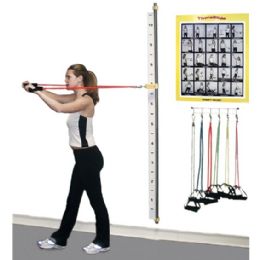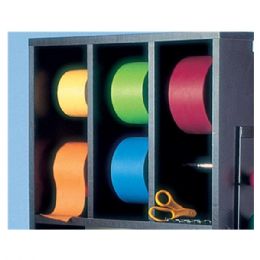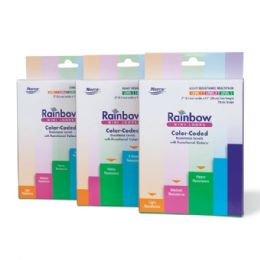











Why are resistance bands and tubing used?
Resistance bands and tubing are used to develop strength and muscle tone through the repetition of movements to exercise various muscle groups. They may be used in addition to, or instead of hand weights in an exercise or physical rehab program.
Exercising with bands and tubing creates tension throughout the body, providing a boost to balance and coordination by involving more muscle groups than workouts with hand weights or machines which engage only one muscle group at a time. Unlike machines and hand weights that provide greater resistance when the weight is lifted and less while lowered due to the effects of gravity, the resistance given by the band or tubing remains constant throughout the repetitions, increasing the workout’s efficiency. It also allows them to be used by patients who use mobility devices, live with conditions that cause difficulty standing, or who are bedridden.
The tubing and bands also allow the user flexibility in positioning while performing traditional strength training exercises to work the muscles from different angles and to customize the exercises to the user’s individual needs. They additionally enhance balanced muscular development to prevent injury, such as between the quadricep and hamstring to protect the knees.
Tubes and bands provide resistance during exercises to enhance functional ability, increasing core strength as well as flexibility.
Color coding indicates how many pounds of resistance the tube or band provides. The bands resemble broad open-ended rubber bands. The ends may be grasped or knotted depending on the exercise performed by the user. The tubes are secured in handles to ensure a good grip.
Who uses resistance bands and tubes?
Tubes and bands may be used as part of an indicated therapy and rehab protocol for patients recovering from surgery, or from injuries to joints, tendons and ligaments, rotator cuff issues, and thickness tears in large muscles. They activate the fast-twitch muscles, building strength to support the impacted area during the healing process. Patients recovering from strokes benefit, too, by increasing blood flow to impacted body parts while recovering strength and coordination through therapist-directed exercises.
For children living with neuromuscular or musculoskeletal conditions or who simply need help developing their strength and coordination, exercises with resistance tubes or bands enhance muscle tone and gross motor skills.
Members of the senior population may find them easier to use than hand weights or machines to facilitate total body strength and flexibility, enhancing balance and overall well being.
People of nearly any level of physical fitness may incorporate tubes and bands into strength training programs.
How are they resistance bands and tubing used?
Many of the exercises performed with hand weights may be performed with resistance bands and tubing. The bands or tubing may be stabilized by standing on them, laying down on them, or by wrapping them around a foot, hand, bed frame or a door.
They can also be used to provide resistance during functional exercise patterned after sports-related movements. The tubes and bands are suitable for use by anyone whether they are under the guidance of a physical therapist or a trainer for rehab or sports training purposes or training on their own to improve general fitness.
Where are resistance bands and tubing used?
Tubes and bands may be used in private residences, gyms, physical therapy clinics, physical rehab centers, residential facilities, mainstream and physical education classes and in workplaces to provide a quick workout.
Their light weight and portability allows them to fit into suitcases and carry-ons, making them suitable for travel.
Hulet Smith, OT
Rehabmart Co-Founder & CEO
fj